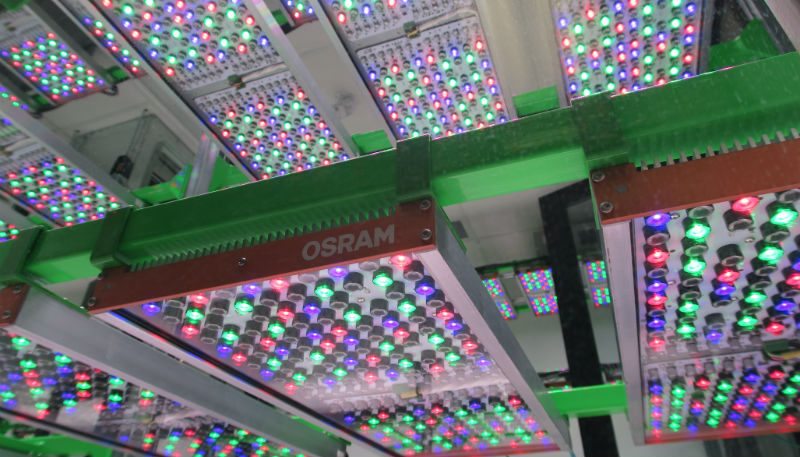
Sole-Source Lighting of Plants
Sole-source lighting is a term used to describe the delivery of light to plants that do not also receive light from the sun. In other words, electric lighting is delivered indoors and provides the sole source of light for plant growth and development. This is distinguished from the two other major types of plant lighting: photoperiodic and supplemental. Photoperiodic lighting is delivered during the night to regulate flowering of daylength-sensitive plants, whereas supplemental lighting is delivered in greenhouses during light-limiting conditions to increase crop growth.
Increased application and interest in sole-source lighting is driven in part by the surge in vertical farming. Inside these plant factories and growth rooms, environmental and cultural conditions can be optimized to consistently and reliably produce crops with the characteristics desired. The most important aspect of indoor production is sole-source lighting, for two reasons: 1) the lighting characteristics entirely control plant growth, and 2) the cost to purchase, install and operate the lighting is one of the greatest operation costs. Success of indoor growing therefore relies heavily on the characteristics of sole- source lighting, and five important considerations follow.
Light quality. The choice of what wavelengths of light to provide to plants, in what proportions, is the most complex yet most important aspect of sole-source lighting. Researchers throughout the U.S., Europe and Asia (including at Michigan State University, Figure 1) are performing experiments to better understand how the light spectrum influences different growth attributes, such as leaf size, thickness and color. These plant growth characteristics — and many more — can be dramatically manipulated by the light spectrum. Thus, there is no such thing as an “optimum” spectrum because one first needs to know which characteristics are of most importance for the producer, and this depends largely on the market.
Light intensity and duration. The most relevant metric for light intensity is the photosynthetic photon flux density (PPFD), which is the number of photons between 400 and 700 nm. A typical PPFD delivered to crops indoors is 150 to 200 μmol·m–2·s–1, although values can be higher or lower depending on the application. For example, a lower intensity may be appropriate.
Light uniformity. Variation in light quality and intensity leads to variation in plant growth, and in many cases, this aspect is not adequately considered in a lighting system. A target for sole-source lighting is for variation in a growing area to be within 20 percent, but this is usually difficult to accomplish.
Fixture efficacy. This metric refers to how effective a light source converts electricity into photosynthetic photons, and uses the unit of micromoles per joule, or μmol·J–1. The higher the value, the more efficient the fixture. A target efficacy of a light system is at least 2.0 μmol·J–1. Note that this metric does not include far-red or UV radiation, and in some cases, these wavebands may be desirable to produce specific plant growth attributes. Therefore, the efficacy metric may be misleadingly low if the light source emits UV and/or far red radiation that is desired for a particular application.
Cost, durability and longevity. Sole-source lighting should be constructed so it can withstand typical growing conditions, including high humidity. In addition to purchase and installation costs, consider expected fixture lifetimes, warranties and maintenance costs, if any.

Erik Runkle is professor and floriculture extension specialist in the department of horticulture at Michigan State University. He can be reached at runkleer@msu.edu.


 Video Library
Video Library 




















